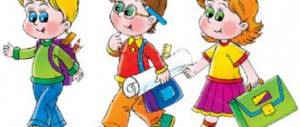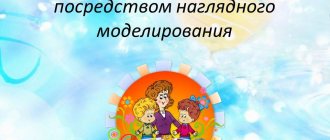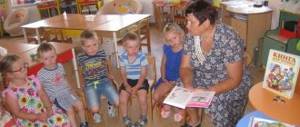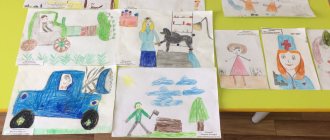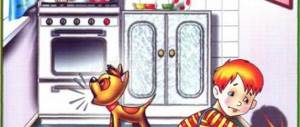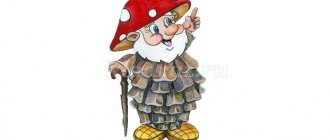Norm of reading technique in 1st grade
1st half of the year Reading should be smooth syllabic, conscious and correct, with clear pronunciation of syllables and words. Reading speed: 25-30 words per minute.
2nd half of the year The child reads whole words correctly, consciously. Words with a complex syllabic structure are read syllable by syllable. Reading speed: 30-40 words per minute.
These texts can be used not only to test a child’s reading technique, but also for retelling. You can read how to teach a child to retell in the article “Teaching a child to retell.”
Texts for testing reading technique in 1st grade
Sparrow and swallows
The swallow made a nest. The sparrow saw the nest and took it. The swallow called her friends for help. Together the swallows drove the sparrow out of the nest. (22 words)
Questions:
- What did the sparrow do?
- Who did the swallow call for help?
Ant
The ant found a large grain. He couldn't carry it alone. The ant called his comrades for help. Together, the ants easily dragged the grain into the anthill. (22 words)
Questions:
- What did the ant find?
- Why did the ant call his friends for help?
Summer
Warm summer has arrived. The currants are ripe in the garden. Masha and Tanya collect it in a bucket. Mom will make jam from it. In the cold winter, children will drink tea with jam. (29 words)
Questions:
- Which berry is ripe in the garden?
- What will mom do?
Fox and cancer
The fox invited the crayfish to run a race. Cancer agreed. The fox ran, and the crayfish clung to the fox's tail. The fox reached the spot. The fox turned around, and the crab unhooked and said: “I’ve been waiting here for you for a long time.” (32 words)
Questions:
- What did the fox offer to the cancer?
- How did cancer outwit the fox?
Cranes
Cranes live near swamps, forest lakes, meadows, and river banks. Nests are built directly on the ground. The crane circles over the nest, guarding it. At the end of summer, cranes gather in flocks and fly away to warm countries. (33 words)
Questions:
- Where do cranes build their nests?
- When do cranes fly to warm countries?
Chick
The little girl wrapped woolen threads around the egg. It turned out to be a ball. She put this ball on the stove in a basket. Three weeks have passed. Suddenly a squeak was heard from the basket. The ball squeaked. The girl unwound the ball. There was a little chicken there. (34 words)
Questions:
- How did the girl make the ball?
- What happened to the ball after three weeks?
Mushrooms
The guys went into the forest to pick mushrooms. Dima found a beautiful boletus under a birch tree. Tanya saw a small oil can under the pine tree. Ilya spotted a huge boletus in the grass. In the grove they collected full baskets of various mushrooms. The guys returned home cheerful and satisfied. (38 words)
Questions:
- Who found the boletus?
- What mushroom grew under the pine tree?
- Where was the boletus hiding?
Summer
Summer has come. In forest clearings the grass is knee-high. Grasshoppers chirp. Strawberries turn red on the tubercles. Raspberries, lingonberries, rose hips, and blueberries are blooming. Chicks fly out of the nests. A little time will pass and delicious wild berries will appear. Soon children will come here with baskets to pick berries. (39 words)
Questions:
- What kind of grass is in the clearings?
- What berries are blooming?
Hedgehog
The guys walked through the forest. We found a hedgehog under a bush. He curled up into a ball in fear. The guys rolled the hedgehog into a hat and brought it home. They gave him milk. The hedgehog turned around and began to eat the milk. And then the hedgehog ran away back into the forest. (39 words) (according to E. Charushin)
Questions:
- Who did the guys find?
- What did the hedgehog do out of fear?
- What did the guys give the hedgehog?
Bathing the cubs
A big bear and two cheerful cubs came out of the forest. The bear grabbed one bear cub by the collar with her teeth and let's dip it into the river. The other bear cub got scared and ran into the forest. His mother caught up with him, slapped him, and then into the water. The cubs were happy. (40 words) (according to V. Bianchi)
Questions:
- Who came out of the forest?
- What did the second bear cub do?
- Were the cubs happy with their bath?
Lynx
In a dark forest, near a forest path, an animal lay down. This is a lynx - a cat as tall as a large dog. She has a short tail, tufted ears, and a spotted skin. The lynx lies on a thick branch and waits. She will rush from the tree to catch her prey. (40 words)
Questions:
- What kind of tail does a lynx have?
- Where was the lynx hiding?
Spring
The sun warmed the earth. Streams ran. The rooks have arrived. Birds hatch chicks. A hare jumps merrily through the forest. The fox has gone hunting and smells prey. The she-wolf led the cubs out into the clearing. The she-bear growls near the den. Butterflies and bees fly over the flowers. Everyone is happy about spring. (41 words)
Questions:
- What is the hare doing?
- Where did the she-wolf take the wolf cubs?
- Where do butterflies and bees fly?
Woodpecker
What is a woodpecker doing in the forest? He lives and works in the forest. A bird with a red cap on its head sits on a tall pine tree and knocks on the trunk with its strong beak. Why is he doing this? The woodpecker saves trees from harmful insects. Therefore, he is often called the forest doctor. (43 words)
Questions:
- What's on the woodpecker's head?
- Why is the woodpecker called the forest doctor?
Meeting
Misha walks along the alley of the old park. Suddenly a small red animal runs out onto the path right at his feet. Squirrel! The squirrel has a fluffy tail. She looks with intelligent eyes. The squirrel is waiting for a treat. Misha hands her a nut. The animal is happy. And now her fluffy tail flashed on the tree. (44 words)
Questions:
- Who was walking in the park?
- Who did Misha meet?
- What did the boy give the squirrel?
Brave men
The guys were going to school. Suddenly a dog jumped out. She barked at the guys. The boys started running. Only Borya remained standing in place. The dog stopped barking and approached Bora. Borya stroked her. Then Borya calmly went to school, and the dog quietly wandered behind him. (44 words)
Questions:
- Where were the guys going?
- What happened on the way?
- How did the boys behave?
- What did Borya do?
Sly fish
I sat with a fishing rod on the shore for a long time. My minnows don't bite. And the grandfather is sitting under a bush and has already caught a bucket. I sat down in the shade. Immediately the minnows began to bite. It turns out that in a clear area the shadow of the fishing rod is visible. So the cunning fish did not come to the hook. (48 words) (According to E. Shim)
Questions:
- Where did grandfather fish?
- Why was he fishing?
- Why didn’t the boy bite at first?
Cockerel
A cockerel walks around the yard: there is a red comb on its head and a red beard under its nose. Petya has a tail like a wheel, there are patterns on his tail, and spurs on his legs. Petya found the grain. He calls the hen with her chickens. They didn’t share the grain - they got into a fight. Petya the Cockerel reconciled them: he ate the grain himself, flapped his wings, and shouted at the top of his lungs: “Ku-ka-re-ku!” (49 words)
Questions:
- Where does the cockerel go?
- What did the cockerel find?
- Who did he call?
- Why did the chickens fight?
The bats
Bats are very useful animals. They eat harmful insects. During the day, bats wrap themselves in their wide wings, like a cloak, and hang upside down in dark places. The night is coming. They fly out to hunt. Many harmful insects fly at night. Almost all birds sleep at this time. Therefore, the “work” of bats is especially important. (51 words) (According to Yu. Dmitriev)
Questions:
- What benefits do bats bring?
- How do bats sleep?
- When do bats hunt?
Ducks
Vasya is sitting on the bank. He watches how the ducks swim in the pond: they hide their wide noses in the water. Vasya doesn’t know how to drive the ducks home. Vasya began to click on the ducks: “Duck-duck-ducks!” The noses are wide, the paws are webbed! Enough of carrying around worms and plucking grass - it’s time for you to go home. Vasya’s ducklings obeyed, went ashore, and are going home. (52 words) (according to K. Ushinsky)
Questions:
- What was Vasya doing on the bank?
- What kind of noses do ducks have?
- What did Vasya call the ducks?
- What did the ducks do?
Winter
Frosts have frozen the ground. Rivers and lakes froze. There is white fluffy snow everywhere. Children are happy about winter. It's nice to ski on fresh snow. Matvey and Lera are playing in the snow. Andrey and Sasha are making a snow woman. Only animals have a hard time in the winter cold. Birds fly closer to housing. Guys, help our little friends in winter. Make bird feeders! (55 words)
Questions:
- Who's happy about winter?
- Who has a hard time in winter?
- How can you help birds?
Four butterflies
It was spring. The sun was shining brightly. Flowers grew in the meadow. Four butterflies were flying above them: a red butterfly, a white butterfly, a yellow butterfly and a green butterfly. Suddenly a large black bird flew in. She saw butterflies and wanted to eat them. The butterflies got scared and sat on the flowers. A white butterfly sat on a daisy. Red butterfly - on poppy. The yellow one is on the dandelion, and the green one is hidden behind a tree leaf. The bird flew and flew, but did not see the butterflies. (56 words)
Questions:
- What butterflies flew over the flowers?
- Why didn't the bird see the butterflies?
If a child’s reading technique is below normal, then it is necessary to either read a lot (which is very difficult if the quality of reading is poor) or use special techniques and exercises, because The reasons for poor reading can be different.
To help slow reading children and children who are unable to move towards increasing their reading speed, you can help using reading according to syllable tables or, which is much more effective, use an integrated approach containing various professional techniques.
To do this, I suggest you use the books:
THE BIG BOOK OF SYLLABLE TABLES is
- a ready-made tool for training reading and speed reading skills;
- 200 syllable tables of different levels of complexity;
- professional methods of working with tables.
The most effective methods will allow each table to be used multiple times, increasing the child’s interest in reading.
Working with these syllable tables, the child will receive:
- improving reading skills;
- increasing reading speed;
- improvement of diction;
- reading comprehension;
- development of thinking and attention;
- expansion of vocabulary;
- increasing self-confidence.
The child will stop stumbling over difficult words when reading. The reading process will become natural and painless.
You can easily print the necessary pages. All pages of the book can be used separately. THE BIG BOOK OF SYLLABLE TABLES is suitable for both those who are just taking their first steps in reading and those who want to significantly improve their reading quality.
Syllable tables help develop children's speed reading skills. But it often happens that a child gets stuck at a reading speed of 10-20 words per minute. It is important to track this moment in time and start immediately doing the necessary exercises.
I have created a training that will help you overcome this barrier without much difficulty. It is convenient to use both at home and when working with the whole class. The variety of tasks will not let children get bored, and parents and teachers will not have to spend a long time selecting the necessary material and tormenting children with a grueling, incredibly difficult process at this stage - reading.
Download TRAINING “Speed reading and speech development”
Along with the training, you will receive a small book as a gift - 20 syllable tables for practicing reading skills (they do not repeat the tables of the big book).
And:
Lesson summary on speech development in 1st grade at 8th grade school
Summary of a correctional lesson in 1st grade for children with moderate mental retardation
Author:
Shulgina Valentina Valerievna, teacher-defectologist Branch of the Municipal Educational Institution “Secondary School No. 1 of Kartaly” - “Special (correctional) school for students with disabilities”
Description of material:
Dear colleagues, I present to you a summary of a comprehensive correctional lesson in 1st grade for children with moderate mental retardation on the topics of development of students’ oral speech (subject: speech development, subject excursion lessons) and the concept of magnitude (subject: mathematics). This material will be of interest to teachers working with children diagnosed with F-70, F-71. The lesson material is aimed at developing children’s understanding of size, as well as developing coherent speech.
Target:
development of children's ideas about a given value, formation of coherent speech.
General educational tasks:
– consolidation of knowledge about the concepts above and below;
vocabulary enrichment; – development of communication skills; - fostering a friendly attitude towards each other. Corrective tasks:
to develop children's auditory perception and attention, to teach them to listen carefully to the speech of others, to perceive it correctly, and to accurately carry out the game instructions given to them;
development of perception of the size of real objects, development of mathematical concepts. Lesson form
: collective.
Equipment:
aircraft model; doll, birds (toy animals), parsley, sets of cubes according to the number of children; computer; sound recordings.
Progress of the lesson:
Quiet melodic music sounds, reminiscent of the chirping of birds.
Teacher:
Hello, guys!
Look who's waiting for us in class? Children
: This is our friend Parsley,
Teacher:
That's right.
In my opinion, the Airplane is calling us on a journey. How do you think? Children:
Yes.
Teacher:
Well, then sit back and let’s begin our journey today.
The sound of an airplane engine sounds. Teacher:
Where did we fly on the plane?
Yes, this is a magical island! Look who meets us there? The teacher shows a doll, toy animals (all toys are small, but different in height). Teacher
: Let's get to know them.
First you will introduce yourself, and then they will introduce themselves to us. The game “Whose name is it?” is played.
Material.
Doll, toy animals: bear, hare, fox, wolf, etc. Progress of the game:
Children sit on a carpet, an improvised island in a circle, and toys sit in the center of the circle.
The defectologist teacher approaches each child and asks his name. The child names himself. If he is silent, then an adult helps him: “Your name is Dima, Maxim?” Next, the teacher asks several more children to name their names, and then asks 2-3 children what the other children’s names are, touching these children’s shoulders. After this, the teacher shows the doll and says: “This doll’s name is Irina. What is her name?" The children answer. "And who is this?" – the teacher asks, pointing to the monkey. “Monkey,” the children answer. “This monkey’s name is Dina.” Children repeat the monkey's name, and similar work is done with other toys. Children repeat after the teacher. If there are non-verbal children in the group, then they also take a passive part in the game. The teacher constantly makes tactile contact with them so that they feel involved in what is happening. Teacher:
Well done!
It's good that we all know each other now. It's time to rest. Physical exercise.
Quiet music is playing.
Teacher:
Guys, a breeze has blown onto our magical island.
Children repeat after the teacher smooth movements with raised arms, imitating swaying palm trees. The wind is blowing in our faces. The tree swayed. Wind, quieter, quieter, quieter... The tree is getting higher, higher! The movement is repeated several times. Teacher:
Look how many new friends we made today that we met on the island.
I suggest that you each take one new friend (it’s better if the teacher himself hands out a toy to each child). Teacher:
Well done!
Now go to your desks, you have sets of cubes on them. I suggest you build towers as tall as your new friend. Like this. (The teacher shows a sample). The game “Whose tower is taller” is played.
Material: sets of cubes according to the number of children, two sets per desk.
Animal figurines. Progress of the game:
Children, together with the teacher, build turrets from cubes, two on each desk, the height of the chosen toy.
When the towers are built, the teacher suggests comparing them in height: which is higher, which is lower, or the same. The game must be repeated several times with different toys, so that different combinations are obtained on each desk so that everyone can observe and compare the heights of the towers. Teacher:
Well done!
Now we put the cubes into boxes. (At this time, the teacher collects animal figures). Teacher:
Did you like it on the island?
Children:
Yes!
Teacher:
Shall we come here again?
Children:
Yes!
Teacher:
Great, I'm glad you liked it.
And now it's time to head back. We sit back and head back. The noise of the airplane engine sounds again. Teacher:
Well, here we are at home.
Look who's meeting us! Our friend Petrushka, who lives in our class. He was waiting for us and missed us, and he was also very interested in where we visited and what we did there. The time has come to tell Petrushka about what happened to us. The lesson is summed up, in which children, in response to leading questions from the teacher, talk about what they did during the lesson.
